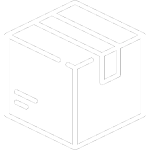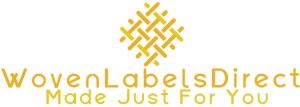How to Design a Clothing Label in Australia
- Post author By Stuart Astley
- Post date August 21, 2024
- No Comments on How to Design a Clothing Label in Australia
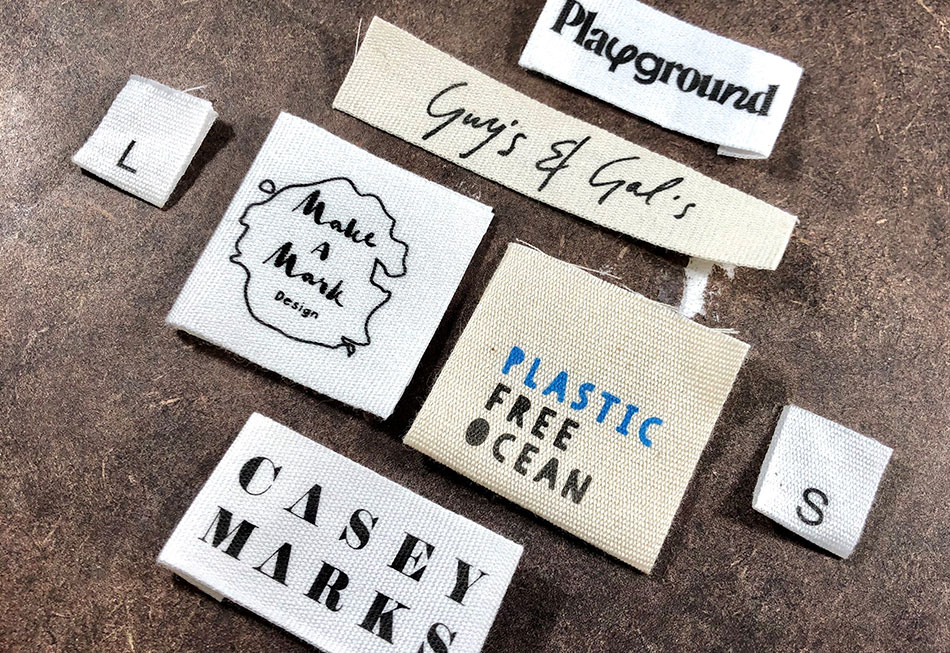
Designing a clothing label is a crucial aspect of establishing a brand identity, especially in a competitive market like Australia. Whether you’re a small business owner, a designer, or a beginner, crafting a well-thought-out label can make a significant difference in how your brand is perceived. This guide will walk you through the process, helping you create labels that not only stand out but also align with your brand’s vision. At Woven Labels Direct, we specialise in delivering high-quality labels across Australia, ensuring that every detail of your design is perfectly executed.
In This Article:
- The Impact of a Good Label
- Types of Clothing Labels
- Choosing the Size of Your Labels
- Clothing Labels Folds
- How to Attach Your Labels to Clothing
- Choosing the Right Colours for Your Label
- Choosing Fonts for Your Label
- Expert Clothing Label Design Tips
- Designing Your Label
- Our Suggestion & Process
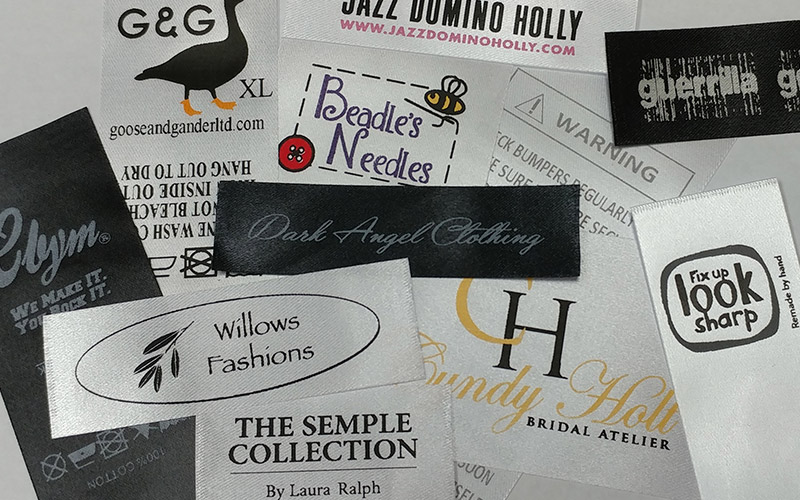
The impact of a good label
Designing a clothing label involves more than just selecting a material and slapping on a logo. It’s about creating a visual representation of your brand that speaks to your audience. With over 40 years of experience, Woven Labels Direct, a family-owned business based in Hall Head, Western Australia, has been helping Australian brands bring their vision to life with custom labels. From woven to printed, leather to PVC, we offer a wide range of options to suit your specific needs.
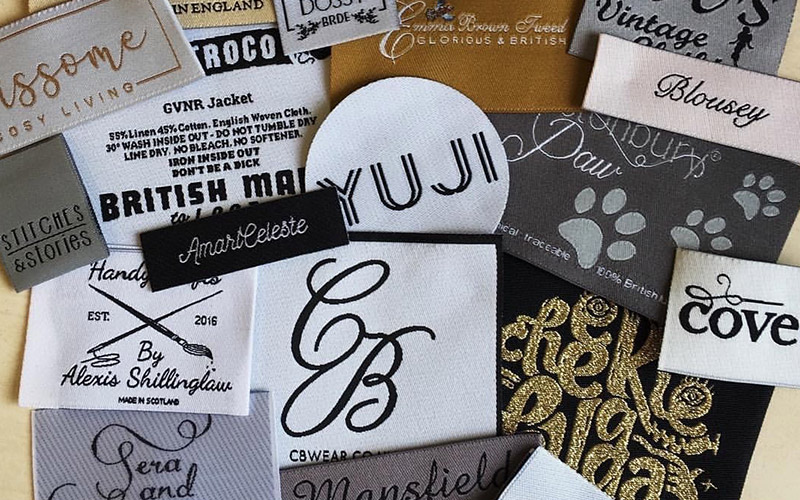
1. Types of Clothing Labels
When it comes to clothing labels, the material you choose plays a significant role in how your label will feel, look, and last. At Woven Labels Direct, we offer several types of labels to cater to various requirements:
Woven Labels
- Damask Labels: Known for their high density and fine detail, damask labels offer a soft finish and are perfect for intricate designs. Explore our designer woven labels.
- Taffeta Labels: Made from polyester, taffeta labels are a more cost-effective option. They are less soft than damask but still provide a clean and sturdy label.
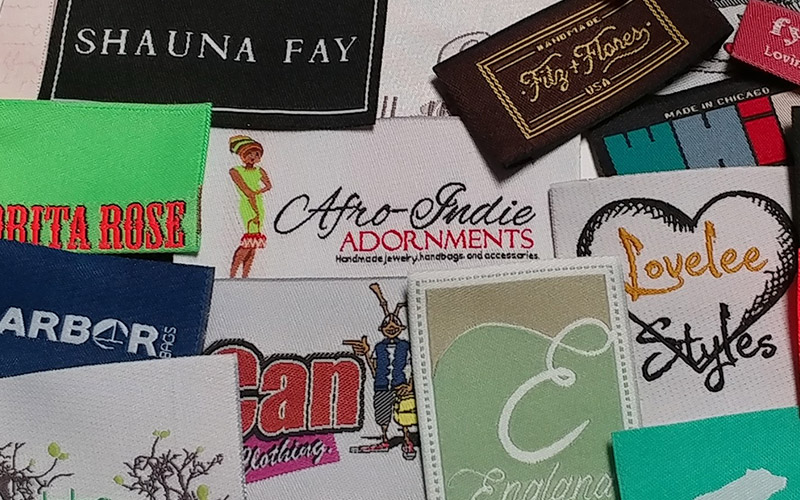
Printed Labels
Printed labels are ideal for those looking to achieve a clean, crisp look with the ability to print intricate details. They can be made from various materials, including satin, cotton, polyester, Tyvek®, and cardstock. These labels are versatile and can be used for a range of products.
Leather Labels
For a premium, rugged look, leather labels are an excellent choice. Available in genuine leather or PU leather, these labels are often used for jeans, jackets, and other durable items. Check out our leather labels.
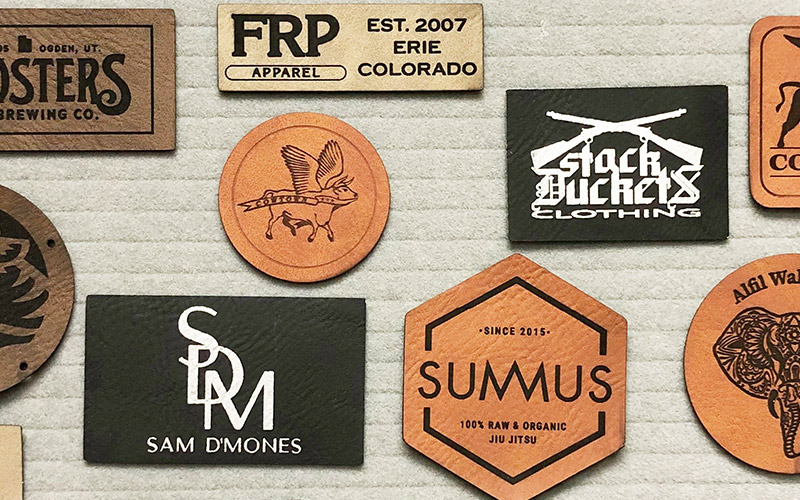
PVC Rubber Labels & Patches
If you’re designing for outdoor or sportswear, PVC rubber labels are perfect. These labels are waterproof, weather-resistant, and flexible, making them ideal for items like jackets, bags, and caps. Discover more about our rubber labels.
2. Choosing the Size of Your Labels
The size of your clothing label is crucial, as it needs to be both visible and proportionate to your product. Here are some common size recommendations based on the type of label and its placement:
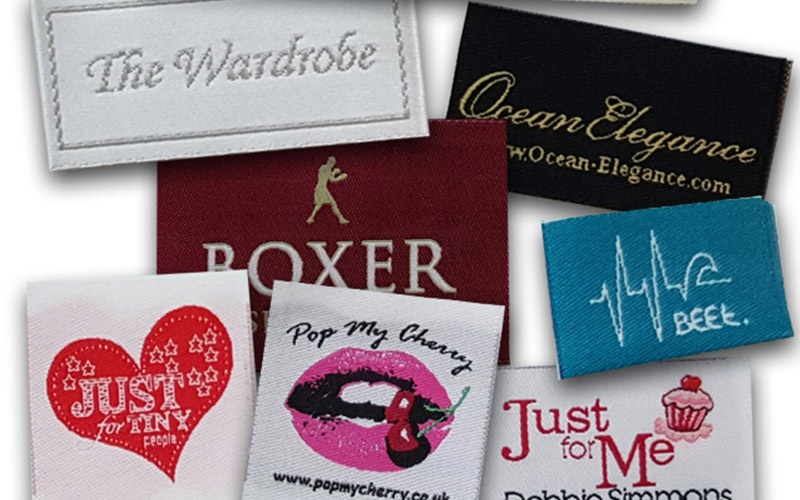
Neck Labels
For T-shirts, a 50mm x 50mm label with a center fold is typical, creating a finished size of 50mm x 25mm.
Hem Tags
These are usually 23mm x 50mm folded to 23mm x 23mm, making them ideal for branding on the hem of shirts, jackets, or skirts.
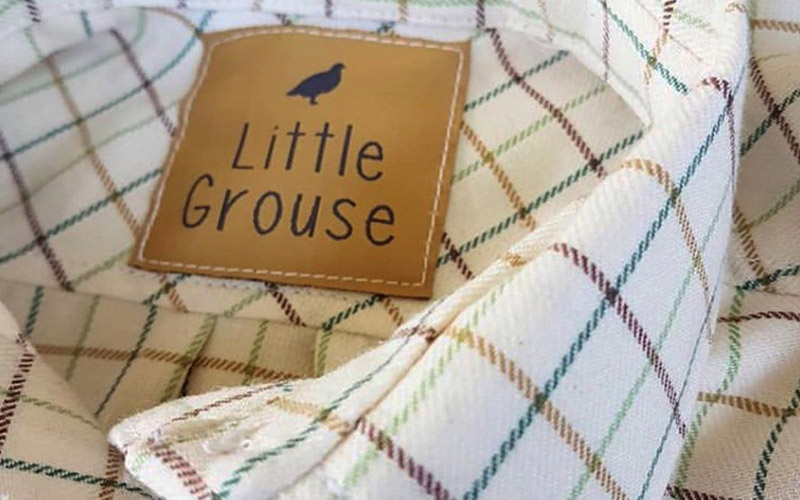
Care Labels
Care labels are typically placed on the inside seam of clothing. For men’s clothing, a 30mm x 50mm label folded to 30mm x 23mm is common. Women’s clothing often uses a 23mm x 50mm label folded to 30mm x 23mm.
Practical Tip
Always measure the placement area on your clothing to determine the best size. This ensures that your label fits perfectly and is easy to read.
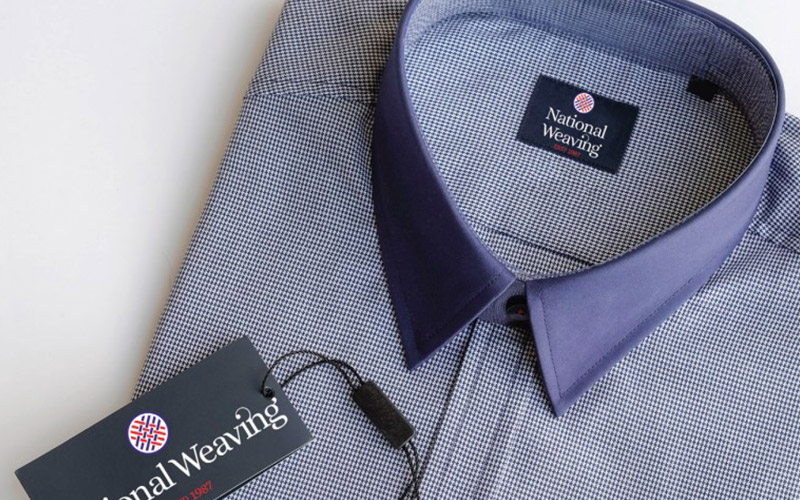
Manufacturing locally costs more, but it’s easier to make sure that your production partners follow ethical practices. You’ll also save on shipping and import-related services. Getting your designs made overseas means navigating import rules and taxes along with potential language barriers. – Open.edu.au
3. Clothing Labels Folds
The way your label is folded can impact both its appearance and how it is attached to your product. Here’s a breakdown of common fold types:
Straight Cut (No-Fold)
Straight cut labels are sewn all around or on the sides. They are ideal for neck labels, iron-on applications, and accessories like handbags.
End Fold
End fold labels are sewn on the sides, making them great for neck and pant labels. They are also perfect for handmade items, as they provide a clean finish.
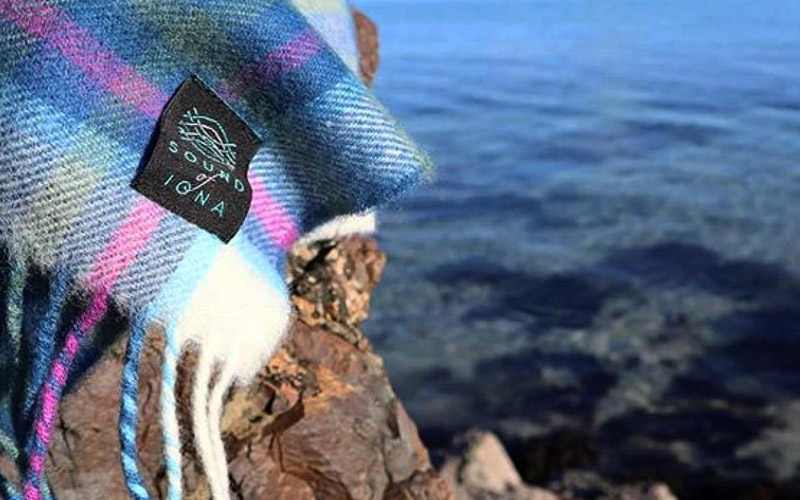
Center Fold
Center fold labels are versatile and can be used for neck labels, care labels, hem tags, and side labels. They stick out slightly, creating a tab-like effect.
Miter Fold
Miter fold labels have two end folds at a 45-degree angle, creating a tab that can be sewn into a seam. They are commonly used on collared shirts, robes, and jackets.
Clothing label designs are so much more than a basic printed clothing size label. They advertise your business, promote your products, and can help to persuade your customers to make their next purchase with you. This might seem like a lot to be achieved with one clothing tag, but you shouldn’t underestimate the power behind a thought-out clothing tag design.
Manhattan Fold
Manhattan fold labels are ideal for attaching to hems or sleeves. They are commonly used on sleeve tags and hem tags.
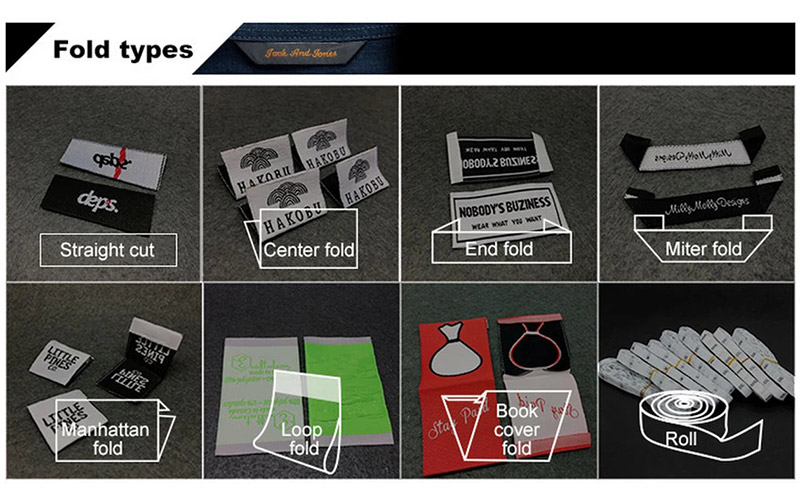
4. How to Attach Your Labels to Clothing
Attaching your labels correctly is crucial for both durability and appearance. The most common method is sewing, which requires a sewing allowance.
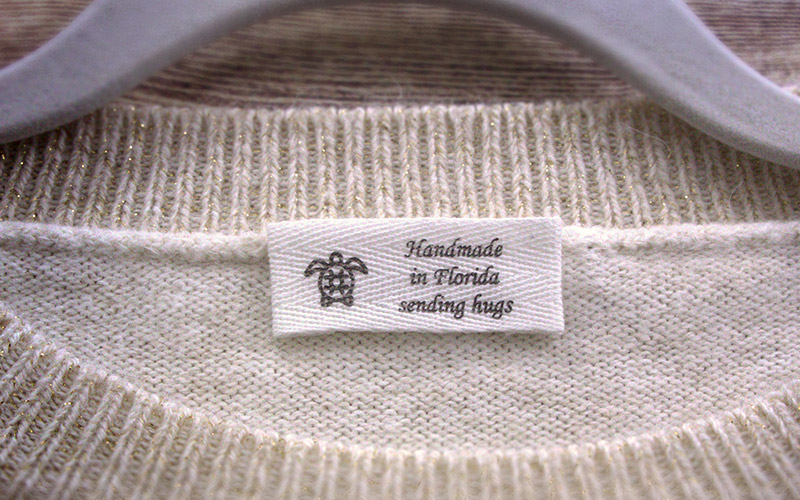
What is a Sewing Allowance?
A sewing allowance is the distance between the edge of the label and the stitching line. It ensures that the label is securely attached without covering the design.
Common Sewing Allowances
The most typical sewing allowance is 5mm, but 6mm is also used depending on the label’s placement and your sewing skills.
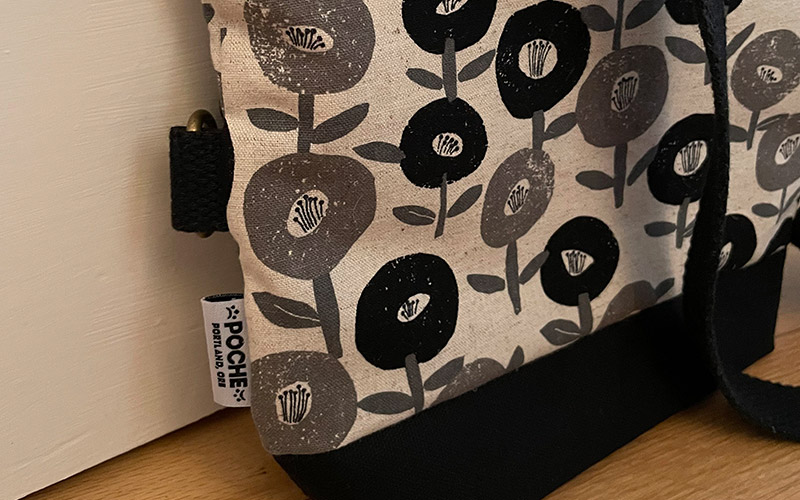
Practical Tip
If you’re unsure about the allowance, start with a 1/8″ margin and adjust as needed. For iron-on labels, you don’t need a sewing allowance, but a little extra white space around the design can help it stand out.
5. Choosing the Right Colours for Your Label
Colour plays a vital role in brand perception. It can evoke emotions and create a lasting impression. At Woven Labels Direct, we offer various colours to match your brand’s identity.
get something that looks professional, and start sewing it on to your clothing. – Peekaboopatternshop
Colour Matching
We use RGB and CMYK for Printed Labels and Pantone colours for Woven labels. Here is a link to a generic Pantone book – https://tool.nbchao.com/seka/list/7/
Please select your colours, and our Weaving manager will find our closest Yarn in stock for you.
Please keep in mind that different manufacturing processes may slightly change colours, as a cotton Printed label is a different manufacturing process from a Woven Damask label or a Printed Satin Label.
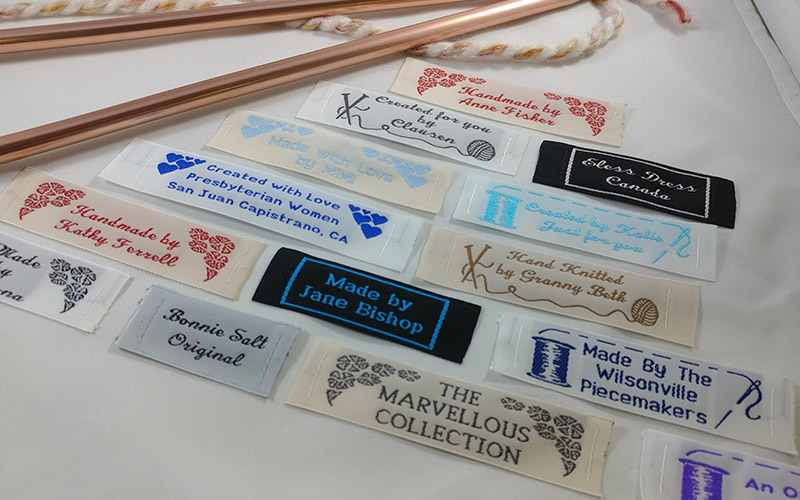
Practical Tip
Choose colours that not only represent your brand but also stand out against the fabric of your clothing. View our thread colour chart for more options.
6. Choosing Fonts for Your Label
Fonts are an essential element of your label’s design. They can make your brand instantly recognisable and should be chosen carefully.
Font Recommendations
- Bold and Simple: These fonts are easy to read and effective in conveying your brand message.
- Limit Font Styles: Stick to a maximum of two font styles to maintain clarity.
- Align with Your Brand: Choose fonts that align with your business area and can grow with your brand.
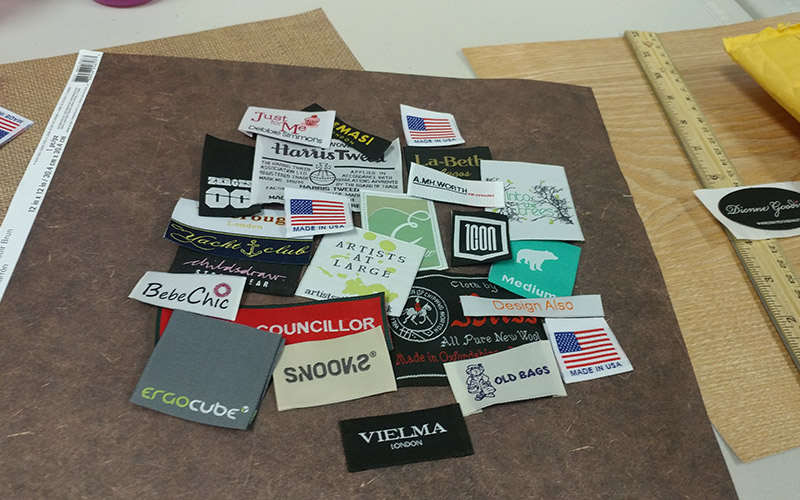
Practical Tip
Avoid overly intricate fonts, as they can become unreadable in smaller sizes. Explore easy font guides for more inspiration.
7. Expert Clothing Label Design Tips
Designing a clothing label requires a balance of creativity and practicality. Here are some tips to ensure your label is both memorable and functional:
Logo Design
Your logo should be simple yet bold, with contrasting colours that make it stand out. Ensure that it’s versatile enough to be used across various applications.
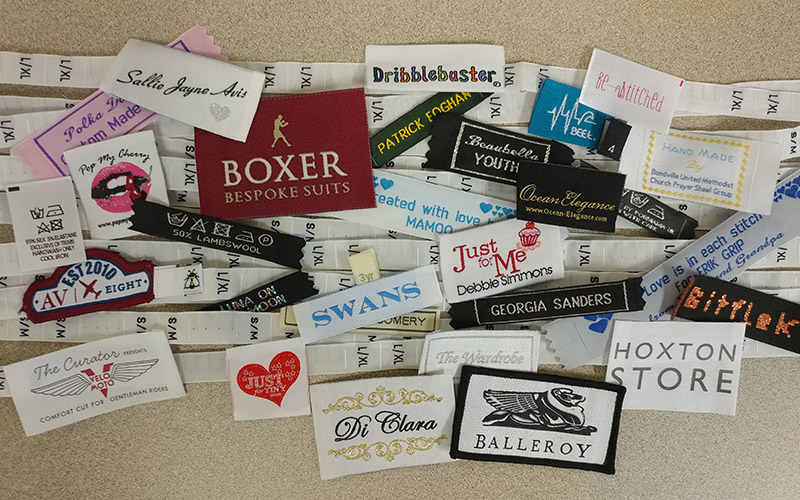
Adaptability
Your label might be used in different sizes, so it’s important to design a logo that remains legible whether it’s on a large banner or a tiny neck tag.
Practical Tip
Consider the production process when designing your label. For instance, woven labels might require a minimum text size of 8pt and a line thickness of 1pt to ensure clarity. Check out successful logo ideas for more guidance.
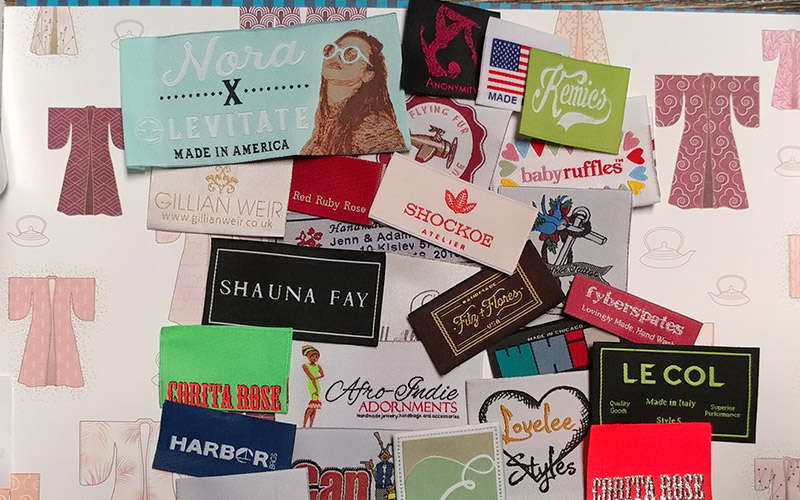
8. Designing Your Label
When it comes to designing your label, simplicity is key. Focus on the following elements:
Colours
Around 50% of our labels are made with a black and white colour scheme, which is both cost-effective and striking.
Folds
The most common fold is the center fold, used in about 23% of our labels. This fold hides the label ends and can be sewn into seams.
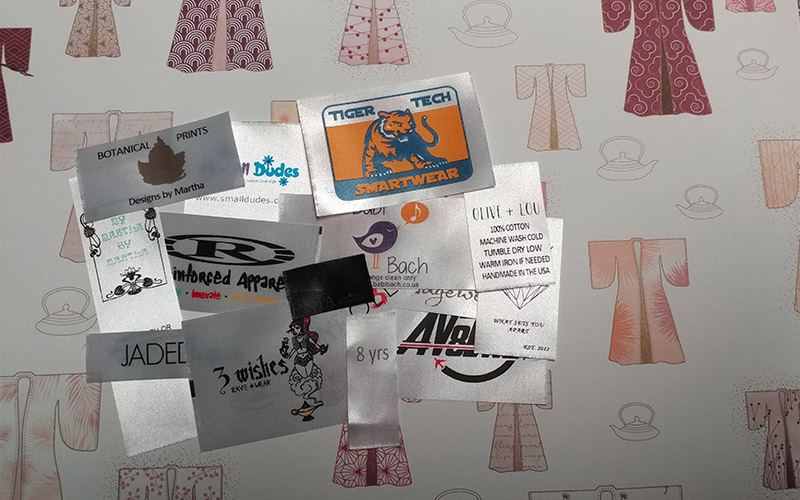
Sizes and Fonts
The most popular label size is 2″ x 1″ for no-folds labels. Most customers use a combination of serif and sans-serif fonts, with cursive fonts reserved for short, bold text.
Practical Tip
Before finalising your design, consider how it will look in various applications. Will it be legible on a small label? Does it work in different colours? Make sure all elements are scalable and adaptable.
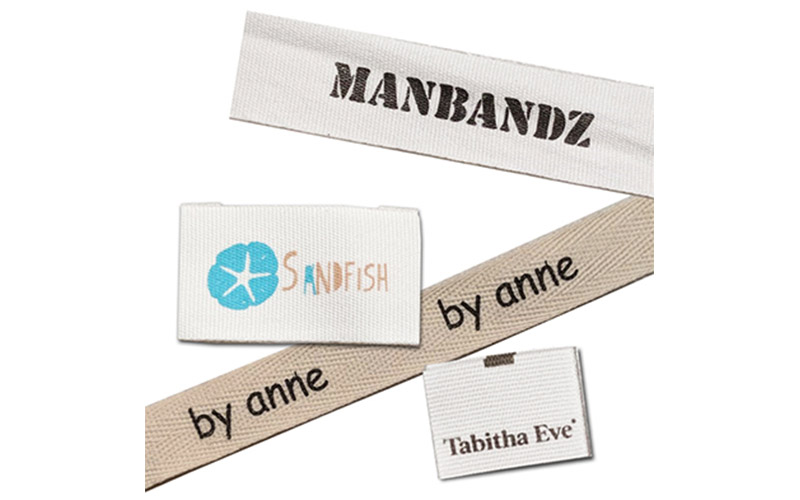
Our Suggestion & Process
Designing a clothing label in Australia is an exciting journey that involves creativity, careful planning, and attention to detail. By following the steps outlined in this guide, you can create a label that not only represents your brand but also resonates with your audience. At Woven Labels Direct, we’re here to help you every step of the way, from initial design to final production.
Production Process – From Start to Finish
Our production process is straightforward and designed to get your labels to you as efficiently as possible.
Step 1: Artwork Preparation
Ensure you have your artwork ready. If you need help, don’t hesitate to call us at 08 9534 7527.
Step 2: Submit Your Details
Enter your contact details and upload your artwork via our online form. PDF is the preferred format.
Step 3: Receive a Quote
We will quickly respond with a competitive quote.
Production Time
- Small Run Designer Woven Labels: 3 weeks production time, with a minimum order of 100 labels.
- Printed Labels: Minimum order of 500 labels with a 3-week production time.
- Leather Labels: Minimum order of 1500, with small runs of 250 available, depending on stock.
- PU Leather Labels: Minimum order of 100, with a 3-week production time.
- Rubber Labels: Minimum order of 250, with a 3-week production time.
Let’s Get Started
Step 1
Have your artwork ready. If you do not have artwork prepared, feel free to call us on 08 9534 7527, and we can assist.
Step 2
Enter your contact details in the below form and upload your artwork. PDF is an ideal format for labels.
Step 3
we quickly respond with a competitive quote!
